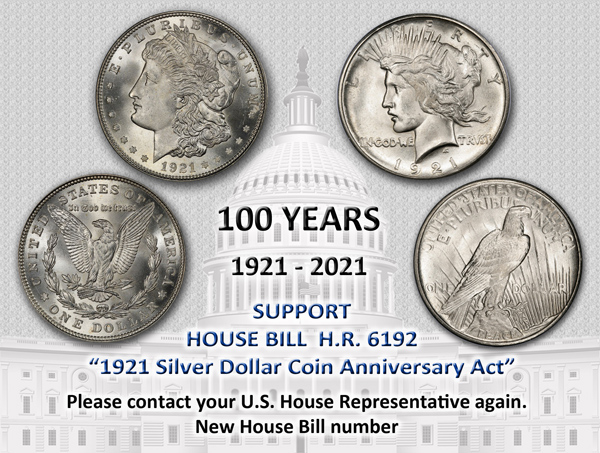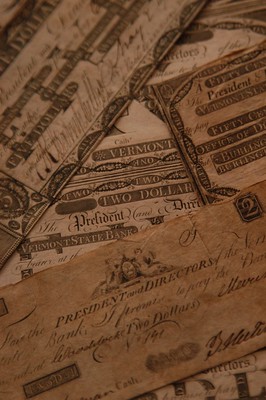
PREV ARTICLE
NEXT ARTICLE
FULL ISSUE
PREV FULL ISSUE
THE RISE AND FALL OF THE VERMONT STATE BANKIn the what-could-possibly-go-wrong? department is this cautionary tale of the rise and fall of the Vermont State Bank. Here's an excerpt - see the complete article online for more. -Editor
Durkee had entered the bank unarmed except for a stack of paper. But it was those papers that bank directors found so threatening. They were bills issued by the Woodstock bank itself, promising to pay the bearer their face value in hard cash, that is, in copper, silver or gold coins. Vermont's first banks were chartered in Woodstock and Middlebury. Branches in Burlington and Westminster would follow. The Vermont law allowing banks only permitted banks owned by the state rather than by self-interested businessmen. That way, some argued, the bank would be "in the hands not of a corps of soulless individuals, but of the true friends of the people." Lawmakers took a conservative approach with the banks. They allowed each to issue bills totaling no more than three times the deposits it had on hand. The rule was intended to make the banks more stable. But rules only work if they are enforced. Some Vermonters worried that bank directors would do a poor job using their power wisely if they had no financial stake in the bank. People, wanting a piece of the action, snapped up the bank bills. They lined up at banks to borrow money, promising to repay the loans at an agreed upon time. The paper currency proved so popular that banks began to run out of bills to loan. So they printed more. By 1808, some banks were circulating bills worth more than seven times as much as the specie on hand, but the Legislature failed to act. The economy was strong, so why get in the way by enforcing regulations? By printing more bills, banks hoped to make supply meet demand, but they were also devaluing the currency. The boom times, however, masked the economic reality. Lawmakers tried various tacks to fix the problem. They empowered banks to crack down on customers who were late repaying their loans by threatening to have them jailed or seizing their property. To tighten the paper money supply and increase its value, the Legislature declared that state property taxes could be repaid using bank bills, which would then be taken out of circulation. In 1812, with the United States slipping into war with Great Britain, Vermont, a likely invasion route, had to prepare its defenses. But the state had little money to spend. Most of its revenues were in nearly worthless paper. That year, legislators admitted the obvious, the Vermont State Bank had been a failure, and ordered the branches closed. The state was getting out of the banking business; private ventures would fill the void. Legislators ordered state bank branches, as one of their final acts, to collect their old bank bills, which had once seemed so vital to the state's well-being, and burn them. To read the complete article, see:
 Wayne Homren, Editor The Numismatic Bibliomania Society is a non-profit organization promoting numismatic literature. See our web site at coinbooks.org. To submit items for publication in The E-Sylum, write to the Editor at this address: whomren@gmail.com To subscribe go to: https://my.binhost.com/lists/listinfo/esylum All Rights Reserved. NBS Home Page Contact the NBS webmaster 
|
